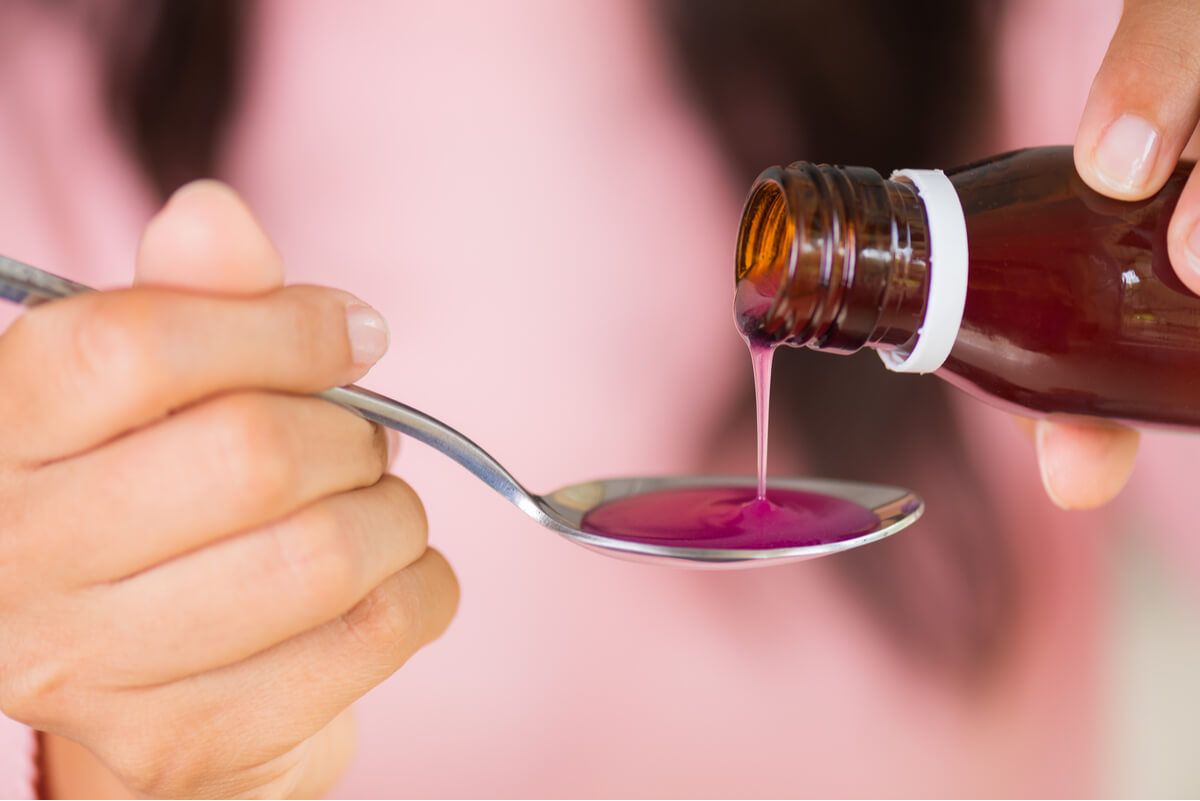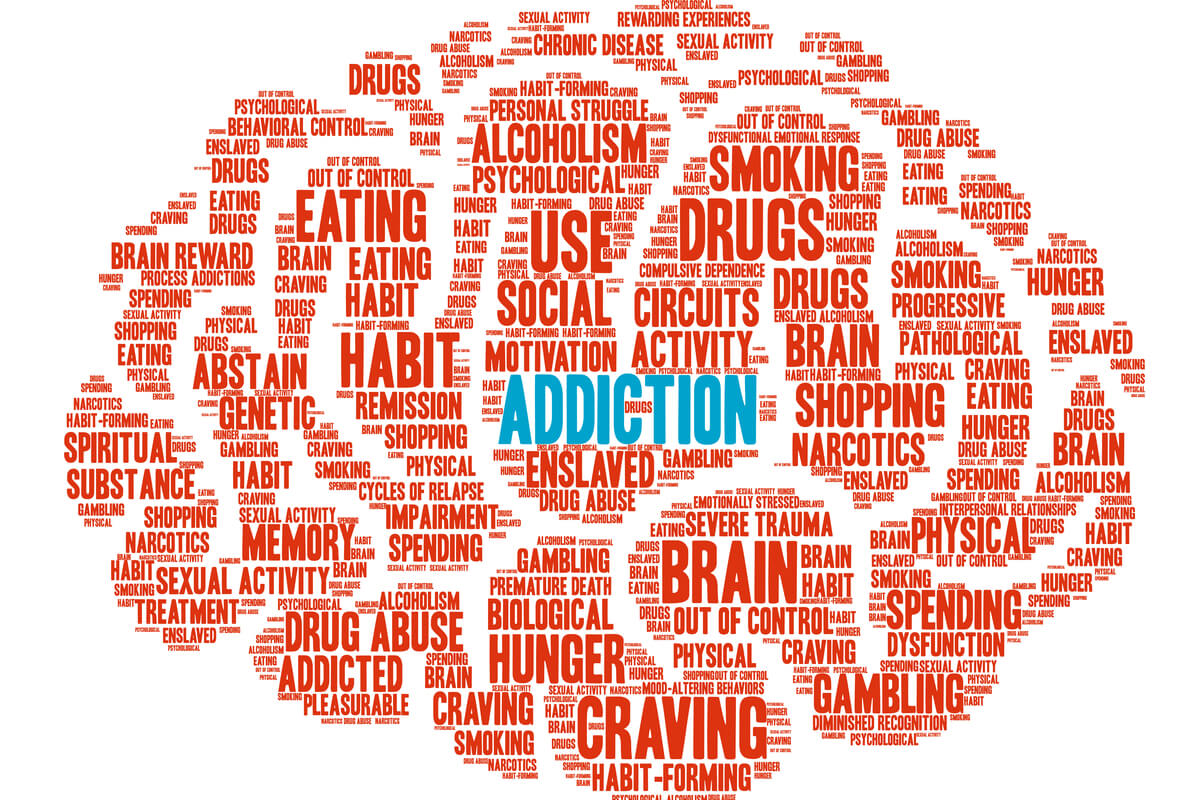
“Lean” is a drink that combines candy, soda, and prescription cough syrup containing Codeine, which is an opioid. It can be dangerous and addictive if misused, although exact data on it is limited.
What Is Lean?

Lean, also commonly called purple drank, is a recreational party drug that is generally made by combining soda (stereotypically but not exclusively purple soda) with codeine and promethazine cough syrup.[1] Candy is then sometimes used to add flavor.
This drug is closely associated with the hip-hop music scene and has been popularized by a number of high-profile musicians discussing or openly encouraging its use. However, its use extends far outside that circle of influence as well.
Key Facts About Purple Drank
Regulations have progressively tightened over the codeine cough syrups used to make lean, with these syrups generally classified as Schedule V drugs. This means they require a prescription.[2]
- The use of lean is understudied, with few epidemiologic studies examining its use.
- Drinking lean is a different but similar practice to “robotripping” (discussed more below).
What Does Lean Look Like?
When soda is mixed with codeine cough syrup to create lean, it often results in a liquid with a purple or pink hue — hence, the name purple drank. However, the reality is that lean can look like almost any color depending on what soda or beverage it was mixed with.
Users attending parties where drugs may be present should always be cognizant not to drink anything not prepared personally. It’s good to practice vigilance with what you drink in general, as parties are one place where people may be targeted for predatory drugging regardless of whether lean is present.
Common Names for Lean
While lean and purple drank are the two common street names for the mixture of codeine cough syrups and soda, some other common names include the following:[3]
- Drank
- Barre
- Purple stuff
- Syrup
- Sizzurp
As with all street drugs, these names will likely change over time and certainly have regional variants.
How Did Lean Become Popular?
Lean’s popularity likely comes from a combination of ease of access to its components, the relatively low cost of those components, and its use and promotion of its use among celebrities, specifically hip-hop musicians. Its use seems to have become a relatively common practice within at least the past 10 to 15 years, although regulators have slowly tried to control the flow of the syrups being misused to make lean and similar drugs.
How Lean Affects the Body
Lean is a drink containing codeine, which is an opioid. Lean will therefore produce the typical effects of an opioid, including dizziness, drowsiness, and euphoria. However, it can also cause a number of unwanted side effects including somnolence, constipation, nausea, headache, and most worrisomely, respiratory depression and overdose. [4]
Side Effects Associated With Lean
Lean contains Codeine (an opioid) and Promethazine (a sedating, anti-nausea medication).
Promethazine can cause a number of side effects, including these:[5]
- Abnormally happy mood
- Blurred or double vision
- Difficulty falling asleep or staying asleep
- Dizziness
- Drowsiness
- Dry mouth
- Hyperactivity
- Itching
- Listlessness
- Loss of coordination
- Nausea
- Nervousness
- Nightmares
- Restlessness
- Ringing in ears
- Stuffy nose
- Vomiting
Codeine, which is an opioid, is associated with headache, stomach pain, and difficulty urinating.[6] Some of its more serious side effects include the following:
- Agitation, hallucinations (seeing things or hearing voices that do not exist), fever, sweating, confusion, shivering, severe muscle stiffness or twitching, loss of coordination, or diarrhea
- Changes in heartbeat
- Changes in vision
- Decreased sexual desire
- Difficulty breathing or swallowing
- Hives
- Inability to get or keep an erection
- Irregular menstruation
- Itching
- Nausea, vomiting, loss of appetite, weakness, or dizziness
- Noisy or shallow breathing
- Rash
- Seizures
Both substances can affect a person’s breathing and have the potential to cause dangerous respiratory depression, especially if used with other drugs. Codeine is also known to cause dependence and addiction.
Overdosing on Lean: Can Lean Kill You?
Lean has undeniably caused serious harm to some users, especially those who have engaged in polydrug use. A man with a history of lean use spent 40 days in a coma after taking lean shortly after Xanax. [7]
Simply put, lean can and has killed people, either through overdose or through accidental injury while intoxicated.
Withdrawal
Codeine-containing syrups have the potential to cause opioid dependence. Opioid withdrawal is often described as flu-like, associated with symptoms such as these:
- Diarrhea
- Muscle pain
- Nausea
- Sleep problems
- Sweating
- Vomiting
- Yawning
Is Lean Misuse a Serious Problem?
Lean misuse is a serious problem. In addition to overdose risk, use of lean also increases your risk of accidental injury and other serious side effects. Long term use can lead to dependence and addiction. Opioids like codeine are the primary contributing factor to America’s addiction and overdose epidemic.
The Dangers of Mixing Lean With Other Drugs
Lean is especially dangerous when used with other drugs. The main risk is the risk of over sedation, respiratory depression and overdose. Two common drugs of concern include alcohol and benzodiazepines. These drugs both suppress breathing and are fairly common in the party scene, significantly increasing a person’s risk of a dangerous overdose. It is common for people to use lean alongside alcohol and benzos. Any drug or medication that is sedating, when combined with Codeine, increases the risk of overdose.
What Is ‘Robotripping’ With DXM Cough Syrup?
While “true” lean is a mixture of soda, candy, and codeine-containing cough syrup, this is not the only cough syrup street drug that is commonly misused. Dextromethorphan (DXM) is another drug of concern.[10] This is a common ingredient found in many cough syrups available all over the country.
While this drug has legitimate uses, it can also be misused in a process called robotripping. This term came from Robitussin, one cough syrup commonly associated with DXM.
Side Effects & Consequences of Robotripping
Robotripping can cause a number of effects, including these:
- Distorted visual perceptions
- Euphoria
- Hallucinations
- Hypertension
- Involuntary eye movements
- Lethargy
- Loss of motor control
- Nausea
- Out-of-body sensations
- Over-excitability
- Slurred speech
- Sweating
- Vomiting [10]
Treatment for Purple Drank Addiction
There hasn’t been significant research on treating lean or purple drank addiction specifically, but there have been a number of well-researched treatment options developed for treating opioid use disorder. Since codeine is the most significantly addictive element of lean, this approach makes sense.
Opioid use disorder is treated through Medication for Addiction Treatment (MAT), which involves the use of medication and therapy. The two most common available MAT medications are buprenorphine (Suboxone) and Methadone.
Lean FAQs
What does lean taste like?
Lean is a combination of cough syrup, candy, and soda. The exact taste will vary depending on the substances used to make it. Since soda and candy are involved, the resulting substance tends to be very sweet and sugary.
Is lean legal?
No, lean is not legal. Lean is made with prescription cough syrups. Because of this, it involves the illegal distribution and misuse of those prescription drugs.
Is promethazine a controlled substance?
The promethazine component of lean is not a controlled substance. Promethazine can be sold on its own, but it may also be formulated in combination with opioids and these combinations are controlled Substances. For example, promethazine HCL and codeine phosphate oral solution is a Schedule V controlled substance.[11] It requires a valid prescription.
Is codeine an opioid?
Yes, codeine is an opioid.
Can drinking lean kill me?
While exact figures don’t appear to be available, drinking lean can and has killed people. The most dangerous of its effects will generally be its ability to suppress breathing, causing the brain to not get enough air. This can lead to death.
How is lean made?
Lean is made by mixing prescription cough syrup, hard candy, and soda (usually lemon-lime soda).

Medically Reviewed By Elena Hill, MD, MPH
Elena Hill, MD; MPH received her MD and Masters of Public Health degrees at Tufts Medical School and completed her family medicine residency at Boston Medical Center. She is currently an attending physician at Bronxcare Health Systems in the Bronx, NY where ... Read More
- Use of “Lean” Among Electronic Dance Music Party Attendees. The American Journal on Addictions. https://www.ncbi.nlm.nih.gov/pmc/articles/PMC6706295/. September 2019. Accessed November 2022.
- Drugs of Abuse. Drug Enforcement Administration. https://www.dea.gov/sites/default/files/2020-04/Drugs%20of%20Abuse%202020-Web%20Version-508%20compliant-4-24-20_0.pdf. 2020. Accessed November 2022.
- Beyond the ‘Purple Drank’: Study of Promethazine Abuse According to the European Medicines Agency Adverse Drug Reaction Reports. Journal of Psychopharmacology. https://journals.sagepub.com/doi/10.1177/0269881120959615. January 2021. Accessed November 2022.
- Resurgence in Abuse of ‘Purple Drank.’ National Drug Intelligence Center. https://www.justice.gov/archive/ndic/pubs43/43924/sw0008p.pdf. February 2011. Accessed November 2022.
- Promethazine. National Library of Medicine. https://medlineplus.gov/druginfo/meds/a682284.html. June 2017. Accessed November 2022.
- Codeine. National Library of Medicine. https://medlineplus.gov/druginfo/meds/a682065.html. December 2020. Accessed November 2022.
- Surviving a “Lean” Overdose. Staten Island University Hospital. https://siuh.northwell.edu/news/surviving-a-lean-overdose. August 2018. Accessed November 2022.
- Purple Drank Prevalence and Characteristics of Misusers of Codeine Cough Syrup Mixtures. Addictive Behaviors. https://pubmed.ncbi.nlm.nih.gov/23688907/. September 2013. Accessed November 2022.
- Opioid Withdrawal. StatPearls. https://www.ncbi.nlm.nih.gov/books/NBK526012/. September 2022. Accessed November 2022.
- Drug Fact Sheet: DXM. Drug Enforcement Administration. https://www.dea.gov/sites/default/files/2020-06/DXM-2020.pdf. April 2020. Accessed November 2022.
- Promethazine HCL and Codeine Phosphate Oral Solution. U.S. Food and Drug Administration. https://www.accessdata.fda.gov/drugsatfda_docs/label/2008/008306s030lbl.pdf. Accessed November 2022.
Download Our Free Program Guide
Learn about our program, its effectiveness and what to expect
Related articles
Imagine what’s possible on the other side of opioid use disorder.
Our science-backed approach boasts 95% of patients reporting no withdrawal symptoms at 7 days. We can help you achieve easier days and a happier future.








